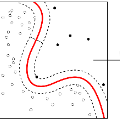Event logs are widely used for anomaly detection and prediction in complex systems. Existing log-based anomaly detection methods usually consist of four main steps: log collection, log parsing, feature extraction, and anomaly detection, wherein the feature extraction step extracts useful features for anomaly detection by counting log events. For a complex system, such as a lithography machine consisting of a large number of subsystems, its log may contain thousands of different events, resulting in abounding extracted features. However, when anomaly detection is performed at the subsystem level, analyzing all features becomes expensive and unnecessary. To mitigate this problem, we develop a feature selection method for log-based anomaly detection and prediction, largely improving the effectiveness and efficiency.
翻译:现有的日志异常现象检测方法通常包括四个主要步骤:日志采集、日志采集、特征提取和异常检测,其中特征提取步骤通过计算日志事件提取出异常现象检测的有用特征。对于一个复杂的系统,例如由大量子系统组成的测谎机,其日志可能包含数千种不同事件,导致大量提取特征。然而,当在子系统一级进行异常检测时,分析所有特征变得昂贵和没有必要。为了缓解这一问题,我们为基于日志的异常现象检测和预测开发了一种特征选择方法,主要提高了效力和效率。



